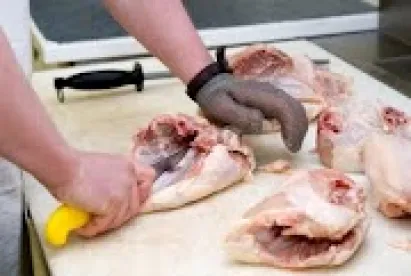The Bankruptcy Code permits a bankruptcy trustee to compel return of a payment made to a creditor within 90 days before a bankruptcy petition. 11 U.S.C. § 547(b)(4)(A). The justification for compelling the return of preference payments is to level the playing field among creditors by not rewarding those who, perhaps, pressed the debtor the hardest on the eve of bankruptcy. Given the justification, the Code provides a defense to preference liability for creditors who received payments “made in the ordinary course of business or financial affairs of the debtor and transferee.” Id. § 547(c)(2)(A). In the recently-decided Unsecured Creditors Comm. of Sparrer Sausage Co. v. Jason’s Foods, Inc., No. 15-2356, 2016 WL 3213096 (7th Cir. June 10, 2016), the Court of Appeals for the Seventh Circuit refined the contours of the ordinary-course defense by clarifying the standard for calculating the baseline of payment history between a creditor and debtor, in effect, what makes the course of payment “ordinary.”
Jason’s Foods (Jason’s) is a wholesale meat supplier that provided unprocessed meat products to Sparrer Sausage. Id. at *1. In the relevant 90-day period, Sparrer paid 23 invoices to Jason’s, totaling nearly $590,000, which Sparrer’s creditors’ committee (exercising trustee avoidance powers) sought to recover. Id. Conceding that the payments were otherwise avoidable preferences, Jason’s asserted that the payments had been made in the ordinary course of business between it and Sparrer. Id.
The bankruptcy judge determined that before the preference period Sparrer generally paid invoices from Jason’s within 16 to 28 days and that 12 of the 23 payments in the preference period, totaling about $280,000, were ordinary and unavoidable because they fell within that range. Id. But, the judge concluded, the remaining 11 payments, totaling nearly $310,000, were not made in the ordinary course because they were made either too early (14 days) or too late (29, 31, 37, and 38 days) after invoice date. Id. The district court affirmed the bankruptcy judge. On further appeal to the Seventh Circuit, Jason’s challenged the bankruptcy judge’s determination that Sparrer typically paid invoices within 16 to 28 days, asserting that the judge’s calculation did not accurately reflect the companies’ payment practices before the preference period. Id. at *3.
In an opinion by Judge Diane Sykes, the Seventh Circuit reversed. The court first addressed whether the bankruptcy judge established the appropriate historical period for reflecting the companies’ typical payment practices, emphasizing that “[i]n all cases the contours of the historical period should be grounded in the companies’ payment history rather than dictated by a fixed or arbitrary cutoff date.” Id.
The court noted that Jason’s and the committee had stipulated to a historical period spanning 21 months of the parties’ 24 months of business relationship, a period that encompassed all 235 invoices Sparrer paid before the preference period. Id. Sparrer paid these invoices within 8 to 49 days, with an average invoice age of almost 25 days at the time of payment. Id. However, the bankruptcy judge disregarded the stipulation and truncated the historical period to include only the 168 invoices that were paid before a date of about seven months before the start of the preference period, when, he concluded, the delay in payments from Sparrer began to increase. Id. Sparrer paid the invoices in that period within 8 to 38 days, with an average invoice age of 22 days. Id.
Jason’s contested the judge’s decision to ignore the stipulation and to adopt an older and shorter period as the basis for historical comparison, but the Seventh Circuit deferred to the judge’s exercise of discretion, noting that the “judge offered a reasoned explanation for his decision, and his reasons were grounded in Sparrer Sausage’s payment history and supported by the record.” Id. at *4.
The Seventh Circuit then turned to the bankruptcy judge’s calculation of the baseline payment practice between Sparrer Sausage and Jason’s. Using the truncated historical period of February 2, 2010, to April 15, 2011, the bankruptcy judge determined that Sparrer Sausage typically paid invoices from Jason’s within 16 to 28 days. The judge arrived at this baseline by calculating the average invoice age of 22 days and adding six days on both sides of that average, a process known as the average-lateness method. Id. at *4. Jason’s objected to the bankruptcy judge’s methodology, insisting that the judge should have applied what is known as the total range-method: using the total range of invoice ages during the historical period, 8 to 38 days, as the baseline. Id.
The court also concluded that the bankruptcy judge’s choice to use what is known as the “average lateness” methodology (determining the average invoice date and adding some time to it in both directions) was also within his discretion. But, the court held, the judge’s application of the average-lateness method was “flawed.” Id. Specifically, the court rejected his finding that invoices paid more than six days on either side of the 22-day average were outside the ordinary course. Id. at *5. In reaching this determination, the Seventh Circuit reasoned that the judge misapplied the “bucketing” analysis from In re Quebecor World (USA), Inc., 491 B.R. 379 (Bankr. S.D.N.Y. 2013). The bankruptcy court in Quebecor World grouped historical-period invoices “in buckets by age” where a stark disparity existed between the average invoice age during the historical period (27.56 days) and the average invoice age during the preference period (57.16 days). Id. at 388. This “bucketing” analysis revealed that the debtor paid 88 percent of invoices during the historical period within 11 to 40 days after the invoice date. Id. The bankruptcy court then expanded this range by five days and concluded that any invoices paid more than 45 days after the invoice date were outside the ordinary course. Id.
The Seventh Circuit contrasted the baseline range in Quebecor World to the 16-to-28-day baseline range in the instant case, which encompassed just 64 percent of the invoices that Sparrer Sausage paid during the historical period. Jason's Foods, 2016 WL 3213096 at *5. The court emphasized that the bankruptcy judge offered no explanation for the narrowness of that range, and the court noted that “by adding just two days to either end of the range, the analysis would have captured 88 percent of the invoices that Sparrer paid during the historical period, a percentage much more in line with the Quebecor World analysis.” Id. The Seventh Circuit then applied the expanded baseline, noting that Sparrer paid 9 of the 11 contested invoices within 14, 29, and 31 days of issuance, which would fall within or just outside the 14-to-30-day range in which it paid the vast majority of invoices during the historical period. Id. The court thus concluded that Jason’s preference liability was limited to $60,000 for the two invoices paid 37 and 38 days after they were issued, placing them substantially outside the 14-to-30 day baseline. Id.
Unfortunately for the committee, even that tiny victory was swallowed up by the fact that Jason’s had supplied product worth $63,000 within the preference period, qualifying for a “new value” credit under § 547(c)(4). Net result for the committee: nothing.
Creditors may now challenge the application of the average-lateness method when the method produces a baseline range that does not cover a large majority of payments made during the historical period. The end result of this is an overall reduction of preference liability.





 />i
/>i
